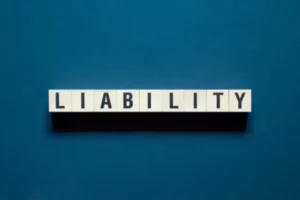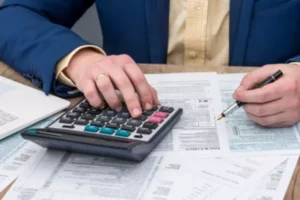Definition and formula
Business owners need to know what they own and what they are owed. In order to manage their assets, business owners must learn a hard truth: that what they own (and are owed) tends to depreciate over the course of its useful life. Companies are incentivized to account for this depreciation. One benefit is the tax advantage; the company’s tax forms will take into account a cost of operation relative to its usefulness, resulting in a lower tax burden. Depreciation also helps companies plan how much revenue to divert towards the eventual replacement of those items. So, while assets sadly don’t last forever, businesses can at least make the most of accounting for depreciation to put themselves in a more favorable financial position.
Business owners clearly have a strong incentive to track depreciation, but how can they actually measure it? Accountants know that different assets depreciate at different rates depending on their usefulness, lifespan, and currency. They have several methods at their disposal and choose depending on the asset at hand. One of the most common choices is the double declining balance method of depreciation (DDB).
Double declining balance depreciation assumes that holdings depreciate twice as quickly as in the straight-line method, in which they devalue at an even rate. Accountants apply double declining balance depreciation to long-lived holdings that depreciate more rapidly than others. This technique is the most popular among the accelerated depreciation methods, in which assets devalue more rapidly in the beginning of their useful life. Accelerated decline allows the company to frontload its deprecation-related expenses on financial statements, which subsequently reduces revenue and taxes. Business owners should be familiar with the purpose and function of this popular procedure, as it has the potential to help maximize their profit margin as their holdings naturally depreciate.
Double declining balance is calculated using this formula:
2 x basic depreciation rate x book value
The formula for calculating DDB begins with a calculation of the basic depreciation rate, or the rate at which a holding depreciates using the straight line technique.
To get that, first calculate:
Cost of the asset / recovery period
Once you’ve done this, you’ll have your basic yearly write-off. You can use this to get your basic depreciation rate.
Basic yearly write-off / cost of the asset
Double declining balance depreciation assumes that the rate of decline is twice that of the straight line method. While this may seem steep, DDB never completely reduces the asset’s worth to zero. When the net book price becomes insignificant in comparison to the item’s original cost, it is completely written off in the last year of its useful life. Note that the Asset Cost minus the Accumulated Depreciation portion of the equation is simply the item’s current book value.
Double Declining Balance Method of Depreciation: Pros and Cons
You may be wondering how accountants decide when to use this technique. Any procedure for accounting for depreciation has advantages and drawbacks that depend on the specifics of the situation in which the method is applied. Bookkeepers juggle the pros and cons based on the specifics of the account at hand. In the case of double declining balance depreciation, the advantages include:
- The possibility of including most of the item’s cost in the cost of products during the first half of the life cycle
- Certainty of the highest efficiency of investments in fixed assets
- The ability to reduce taxes
- The possibility of depreciating production equipment
However, DDB also has several disadvantages, listed below:
- Inability to write off the entire residual value of the holding
- Inapplicability to equipment with a useful life of less than three years
- Unsuitability for accounting for the wear and tear of furniture, buildings, and other structures
- Inapplicability to equipment for production of certain limited types of products.
Example of Double Declining Balance Depreciation
Consider the following example. Suppose Johnson’s Cars buys equipment for $380,500. The useful life is estimated to be 4 years and a salvage value – $85,000. Below, we will calculate the decline of this equipment’s worth in the second year using double declining balance depreciation.
- First, we need to calculate the depreciation expense for the first year. By simply inputting the following data – equipment cost -$380,500, salvage value – $85000, and the useful life – 4 years.
1.1 Figure out the basic yearly write-off: 380500/ 4= 95125,00
1.2 Figure out the straight-line rate of depreciation: 95125.00/380500= 0.25 (25%)
1.3 Figure out the straight-line rate of depreciation: (Each year, you subtract the amount you depreciated over previous years from the book value. This is our first year of depreciating this asset, though, so it won’t change.)
380500-0 = 380500,00
Remember to do this step every year.
1.4 Enter the straight line depreciation rate in the double declining depreciation formula, along with the book value for this year.
(2 x 0.25) x (380500) = $190250.00
Remember—you need to recalculate the book value every year. So you might as well make a note now:
380500.00 – 190250.00 = $190250.00
Next year when you do your calculations, the book value will be $190250.00
- For the second year:
(2 x 0.25) x (190250.00)= $ 95125.00
If the resource was deployed in the middle of the year, we would need to adjust the recorded depreciation for the first year accordingly. For instance, if the equipment was used only starting from August 1st, then we would multiply the $73,875 by 5/12 (months) to get $30,781. When calculating depreciation expense for the next year, we will now use $30,781 accumulated depreciation amount instead of $73,875. Of course, Johnson’s Cars benefits from all of this number-crunching. By recognizing depreciation expenses early on, they turn their reduced profitability into an advantage come tax time.
The depreciation of assets can meaningfully impact the bottom line of any business, and the double declining balance method is one of many strategies for assessing it. You can avoid the hassle of doing these calculations yourself and prevent any costly accounting mistakes by enlisting the help of an experienced bookkeeper. With professional accounting expertise on your side, you can be confident that your capital is properly accounted for and that your business is on the right track. Contact BooksTime to find out more about bookkeeping services that can help you take your business to the next level while saving you valuable time and money.

















